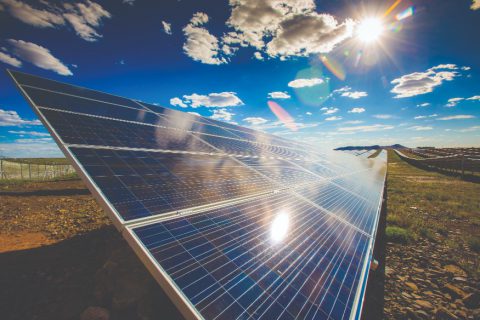Sunday Times Green
Soak Up The Sun
Solar power was once considered the domain of the wealthy, with panels adorning the roofs of those who could afford the significant outlay required to save money down the line. But, with dropping hardware and installation prices coupled with Eskom’s perpetual management and delivery woes, solar has started to make more and more sense at the utility level.
With 2.3GW of installed capacity connected to the grid via large generators, South Africa is ranked around 10th in the world in terms of utility solar adoption (not including local-use small generators on domestic or office roofs). There’s a big gap between the leading countries and us, though. According to Wiki-Solar, at the end of 2018, China (number one) had 63GW of solar production, the USA (number two) had 33.2GW, while Chile (number nine) had 2.6GW.
But how does solar compete with other, more conventional forms of power generation as far as cost is concerned? Pretty well, according to Davin Chown, chairperson of the South African Photovoltaic Industry Association.
“The cost is well within affordability at a bulk renewable level,” says Chown. “In terms of cost, a new-build coal plant is going to deliver, but if you look at the maintenance cost of that, then generation becomes more expensive, and the numbers are increasing substantially. Eskom’s availability is so compromised that it also has to use more expensive gas plants, which run on diesel, escalating their costs. But, if you look at the latest round of bidding on wind and photovoltaic power, prices are in the late 50 to early 60 cents per kilowatt-hour.”
Chown cites several factors that have driven down the price of going solar in South Africa. “There is a lot of international pressure and change around technology that sees the costs decreasing. We can import cheaper panels, construction costs are coming down, and the financing is making a difference. Many big utilities entering the market are working to drive down the cost because they can bid in and compete at cheaper rates.”
A coal-free future?
What is the future like for South Africa’s energy generation? Are we on track to be free of coal?
Prof Sampson Mamphweli, director of the Centre for Renewable and Sustainable Energy Studies at Stellenbosch University, says the Renewable Energy Independent Power Producers Programme (REIPPP) has helped drive the construction of large-scale solar photovoltaic (PV) plants across the country, but more still needs to be done.
“Government introduced the REIPPP in 2011 after the Integrated Resource Plan (IRP) set a target of 40 per cent renewable energy contribution by 2030,” he says. Solar PV should make up a quarter of that.
Making a smooth transition
A recent key debate around energy is how to make a smooth transition from conventional generation to renewables. Trade unions have been particularly concerned about the loss of jobs that might result from a move away from coal usage. There is also a widely held view that Eskom in its current form is unsustainable.
“The mooted restructuring of Eskom is of paramount importance to ensure that the utility is run efficiently and generates the much-needed revenue for its long-term survival,” says Mamphweli. “The current REIPPP is good enough to ensure an economically stable and viable transition to clean energy.
We just need policy certainty to ensure that the country can continue to attract direct foreign investments through this programme. There is also a need for continuity in terms of the programme — many companies manufacturing and assembling solar panels closed down when there was a delay in the signing of the 27 projects that were signed in bid window four by the Minister of Energy. This led to missed export opportunities and job losses.”
Chown believes that a clear exit strategy from coal power has yet to be established.
“When we have a utility in distress, who’s going to pay for the decommissioning of power plants?” he asks. “A well-crafted transition to renewables and the adoption of new technologies, off the back of greater conventional efficiency, is going to require a far more considered strategy. Eskom has no choice but to do this.”






 Sign-up and receive the Business Media MAGS newsletter OR SA Mining newsletter straight to your inbox.
Sign-up and receive the Business Media MAGS newsletter OR SA Mining newsletter straight to your inbox.